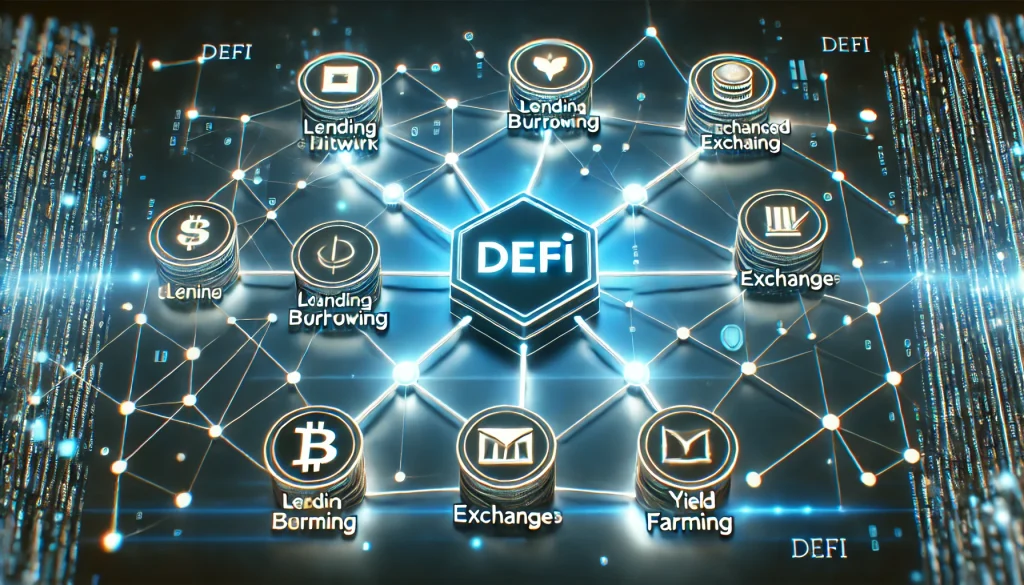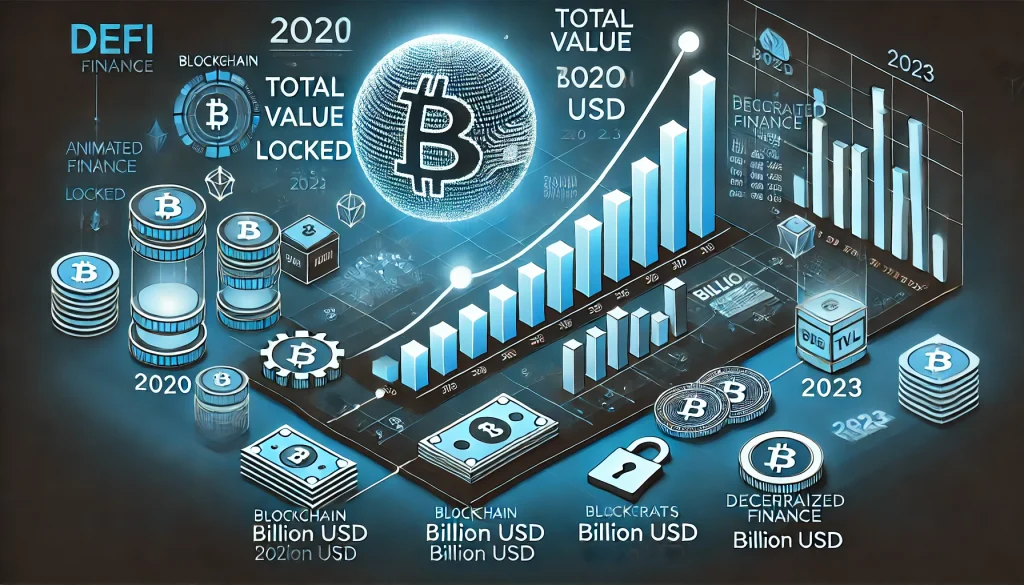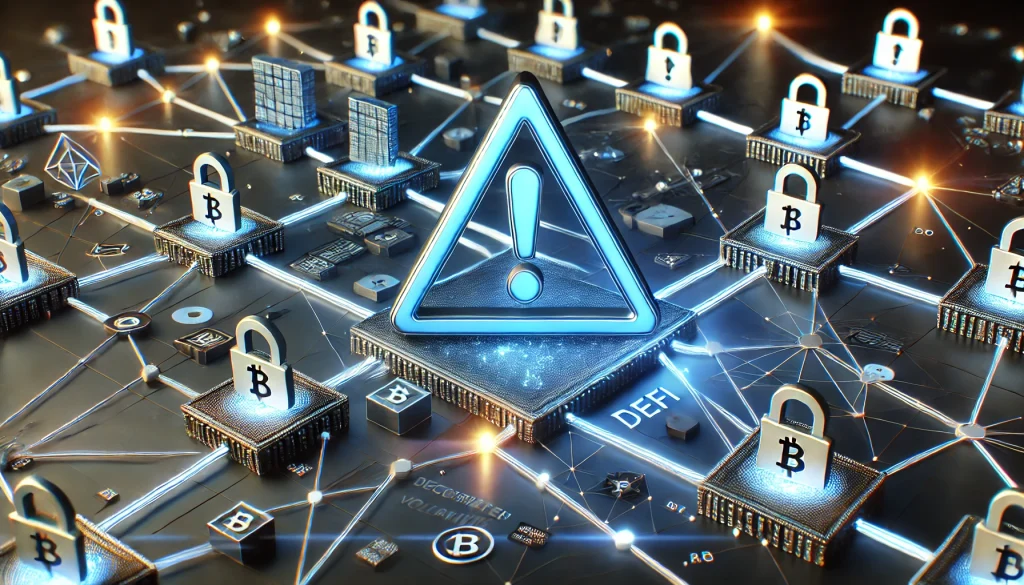
Decentralized Finance, or DeFi, has become one of the most exciting innovations in the financial world. It enables peer-to-peer transactions without intermediaries like banks or brokers. DeFi operates on blockchain technology, giving users more control over their assets while providing financial services like lending, borrowing, and trading. This model is growing fast, with DeFi’s total value locked (TVL) reaching new heights, and millions of users are engaging with DeFi platforms. In this review, we will look at how DeFi is reshaping the global economy, the opportunities it creates, and the risks it presents.
Overview of Decentralized Finance (DeFi)
DeFi is a decentralized financial system that allows users to access financial services through blockchain technology. It eliminates the need for centralized entities like banks or financial institutions. Instead, DeFi uses smart contracts to facilitate transactions. Popular DeFi platforms include lending services, decentralized exchanges (DEXs), and stablecoins. Unlike traditional banking systems, DeFi offers 24/7 accessibility and does not require users to go through credit checks or background verifications. This decentralized nature means that anyone with internet access can participate, making it a global financial movement.
The Economic Impact of DeFi

DeFi is changing the landscape of the global economy by removing the middleman from financial services. The elimination of traditional intermediaries allows for faster and cheaper transactions. Cross-border payments, for example, are processed almost instantly and at lower costs compared to traditional methods. DeFi is also increasing capital efficiency. According to a report by Brookings, DeFi platforms allow users to make more productive use of their assets by lending or staking them, which boosts liquidity in the market.
DeFi is also providing more financial inclusion. Many people in developing countries do not have access to banks, but they can access DeFi services through a smartphone. This allows them to borrow, lend, and trade without the need for a physical bank account. Moreover, DeFi’s transparent nature offers users a clear view of how the system operates, ensuring trust through open-source smart contracts. According to the World Economic Forum, this transparency is driving more users toward DeFi, especially those looking for secure financial alternatives. The total value locked (TVL) in DeFi has seen significant growth, rising from billions in 2020 to over $100 billion by 2023.
Pros and Cons of DeFi
| Pros | Cons |
|---|---|
| Faster and cheaper cross-border transactions | High volatility in crypto assets |
| Financial inclusion for underbanked populations | Significant security risks and hacking |
| Transparent and trustless system through smart contracts | Lack of regulation and user protection |
Risks and Challenges of DeFi on Global Finance

Despite its rapid growth, DeFi is not without risks. One of the primary challenges is the volatility of cryptocurrencies, which can affect DeFi platforms. Since most DeFi services operate on crypto, market downturns can lead to significant losses. Additionally, security risks are prevalent. Hackers often exploit vulnerabilities in smart contracts, leading to significant losses for investors. According to Wharton’s report, many DeFi platforms have experienced major hacks, resulting in billions of dollars in lost funds.
The lack of regulation in the DeFi space also poses economic risks. Without government oversight, users are vulnerable to scams or fraud. Furthermore, regulators might step in to impose stringent rules, which could stifle the innovation and growth of DeFi. Critics worry that DeFi could create economic bubbles, as overvaluation of crypto assets and speculative investments might lead to a crash. Yahoo Finance reported that the decentralized nature of DeFi means that losses are often irreversible, making it riskier for inexperienced users.
DeFi’s Disruption of Traditional Finance
DeFi is also threatening traditional banks and financial institutions. By removing intermediaries, DeFi is taking away revenue streams from banks. For instance, DeFi platforms allow users to borrow and lend without needing a credit score. Traditional banks charge high fees for these services, but DeFi does it at a fraction of the cost. Small and medium-sized enterprises (SMEs) also benefit from DeFi. According to the World Economic Forum, SMEs can now access financing without needing to go through complex banking procedures.
Moreover, DeFi introduces new financial products like yield farming and staking, which allow users to earn passive income. These products make traditional savings accounts and investment products look less attractive, further challenging the traditional finance system. Central banks may need to react to the growing popularity of DeFi, possibly by creating central bank digital currencies (CBDCs) to stay relevant.
Who Benefits Most from DeFi on Global Finance?
- Individuals in developing countries: People without access to traditional banking can now participate in financial services like lending and borrowing.
- Crypto traders and investors: They can maximize their returns through yield farming, staking, and decentralized exchanges.
- Small businesses (SMEs): DeFi offers decentralized loans and financing options without the need for credit checks or intermediaries.
- Users seeking financial autonomy: People looking to bypass government restrictions or traditional financial controls find DeFi appealing for increased financial freedom.
The Future of DeFi and Global Finance
Looking forward, DeFi has the potential to become a mainstream economic force. As the number of DeFi users grows, so does the demand for more advanced financial services. According to Gartner, the DeFi user base is expected to reach over 10 million by the end of 2023. However, scalability is a concern. Blockchain networks like Ethereum are facing congestion due to high transaction volumes, which could limit DeFi’s growth.
There is also the possibility of hybrid systems, where traditional banks integrate DeFi technologies to offer decentralized services. This would create a bridge between traditional finance and decentralized systems, potentially increasing trust in DeFi platforms. The future will depend on how well DeFi platforms can address their current risks and whether they can maintain growth without significant regulatory pushback.
Conclusion: DeFi on Global Finance on the Long-Term
DeFi is undoubtedly changing the global financial system. By removing intermediaries, providing financial services to underbanked regions, and offering innovative investment products, DeFi is challenging the traditional financial system. However, it must overcome significant challenges like volatility, security issues, and lack of regulation to sustain long-term growth. Whether DeFi becomes a major part of the global economy depends on its ability to scale while addressing these risks. For now, DeFi is a powerful tool that offers both great potential and considerable risks.
FAQ
What is DeFi, and how does it work?
DeFi is a decentralized financial system that uses blockchain technology and smart contracts to provide financial services like lending, borrowing, and trading without intermediaries.
How does DeFi impact the global economy?
DeFi reduces the cost of financial transactions, increases financial inclusion, and offers new investment products, but it also brings risks like volatility and security vulnerabilities.
Is DeFi regulated?
Currently, DeFi is largely unregulated, which creates both opportunities for innovation and risks for users due to lack of oversight and protection.
Resources
- EMB. Demystifying DeFi
- World Economic Forum. How Decentralized Finance Is Reshaping Transaction Banking
- Brookings Institution. Review: DeFi and the Future of Finance
- Wharton School. Opportunities and Dangers of Decentralizing Finance
- Yahoo Finance. Can DeFi Help the Global Economy Recover?
